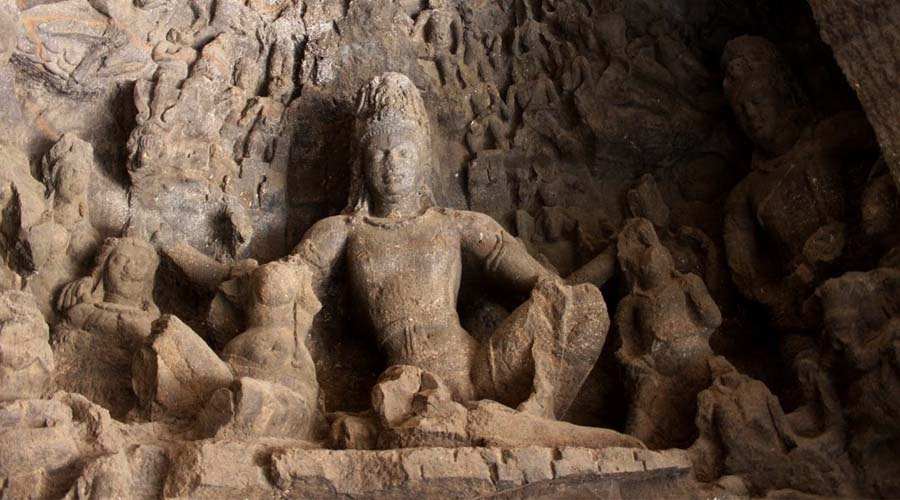Bharat Mata Temple in Haridwar stands as a unique and inspiring tribute to Mother India, embodying the spirit, culture, history, and unity of the nation within its towering structure. Unlike conventional temples dedicated to specific gods or religious icons, this temple venerates the nation itself—Bharat Mata or Mother India. Located on the banks of the holy river Ganga, close to Samanvay Ashram, this majestic eight-storied temple rises 180 feet, blending patriotic fervor with spiritual devotion, making it an extraordinary place for tourists and devotees alike.
The temple was founded by Swami Satyamitranand Giri, a revered spiritual leader, and was officially inaugurated on May 15, 1983, by then Prime Minister Indira Gandhi. Its inception marked a novel approach in Indian temple architecture and cultural homage by focusing on the nation as a divine entity rather than conventional deities. The Bharat Mata Temple celebrates the diverse facets of India’s heritage, freedom struggle, cultural icons, and religious harmony, making it a powerful symbol of unity amidst diversity.
View this post on Instagram
Architecturally, the Bharat Mata Mandir is nothing short of a marvel. Designed by renowned architect Shekhar Bhushan, it stands tall at around 55 to 180 feet (sources slightly vary) and includes eight distinct floors, each with a thematic representation of India’s cultural, historical, and spiritual heritage. The temple’s façade and interiors are crafted to inspire patriotism and reverence towards the motherland. A large, unique relief map of India carved without borders adorns the temple’s main hall, signifying unity beyond political boundaries.
Each floor of the temple narrates a different story or represents a different element of India’s rich legacy:
- First Floor (Bharat Mata Shrine): This is the heart of the temple, housing a divine statue of Bharat Mata herself. The statue symbolizes the motherland and invokes a deep spiritual and patriotic connection. Alongside the statue, a detailed relief map of India is displayed, highlighting the country’s geographical and cultural unity.
- Second Floor (Shoor Mandir): Dedicated to the valorous freedom fighters and heroes of India’s independence movement. This floor honors the sacrifices made by countless patriots who fought bravely for India’s freedom from colonial rule. It houses memorabilia and representations of these legendary figures.
- Third Floor (Matru Mandir): Focused on the revered women of Indian history, this floor celebrates iconic female figures such as Meera Bai, Savitri, and Maitri. It underscores the role of women in shaping India’s cultural and spiritual fabric, highlighting their contributions and valor across eras.
- Fourth Floor (Sant Mandir): This floor embraces religious harmony by honoring saints and spiritual leaders from various Indian religious traditions including Jainism, Sikhism, and Buddhism. Murals and images depict the teachings and legacies of these saints, representing the temple’s inclusive spiritual worldview.
- Fifth Floor: This level is dedicated to Goddess Shakti in her multiple forms, symbolizing divine feminine power and nurturing energy—a vital aspect of Indian spiritual tradition.
- Sixth Floor: Although less detailed in sources, it represents another vital spiritual or cultural theme, often associated with various Indian traditions.
- Seventh Floor: Devoted to Lord Vishnu, the preserver in the Hindu trinity, exemplifying the principle of protection and sustenance within the cosmos.
- Eighth Floor: Dedicated to Lord Shiva, symbolizing destruction and regeneration, the ultimate deity in Hindu tradition, completing the spiritual journey across the temple’s height.
The temple’s nonsectarian and nationalistic approach sets it apart. Unlike typical Hindu temples, Bharat Mata Mandir is not confined to a single religious doctrine, but instead celebrates India as a mother figure, blending religious reverence with patriotic pride. The carvings, exhibits, and murals within depict India’s mythological, historical, and contemporary milestones.
As a tourist and pilgrimage destination, Bharat Mata Mandir has significantly enriched Haridwar’s cultural landscape. It draws countless visitors yearly, including religious pilgrims, history enthusiasts, and patriotic citizens who come to admire the temple’s grandeur and to pay homage to the spirit of India. It is also considered part of the Char Dham Yatra pilgrimage in Uttarakhand, enhancing its spiritual significance.
The temple’s establishment was not just a religious act but also a nation-building cultural initiative. It celebrates India’s unity in diversity, patriotic struggles, and spiritual harmony, encouraging visitors to reflect on the country’s rich heritage and on their role as citizens. The temple’s presence alongside Haridwar’s ancient religious centers represents a modern complement to the age-old spiritual traditions of the Ganga city.
In practical terms, the temple is open year-round, welcoming visitors from morning until evening, with facilities that make it accessible and comfortable. Its strategic location near key landmarks and ease of access underscores its importance as both a cultural and religious site.
In conclusion, the Bharat Mata Temple in Haridwar is a monumental tribute to India’s spirit—integrating patriotism, spirituality, history, and culture in a unique architectural form. It honors the motherland in a way that transcends sectarian boundaries, making it a symbol of national pride and unity. From the massive statue of Mother India to floors dedicated to freedom fighters, saints, and revered women, this temple offers visitors a holistic journey through India’s past, present, and spiritual ethos, instantly connecting hearts with the soul of Bharat Mata.


